
This colourful male Crossbill was one of a group of five that visited our garden today. Its plumage is unusual with some amazing yellow and orange colours. This might actually be the most beautiful Common Crossbill in Iceland.
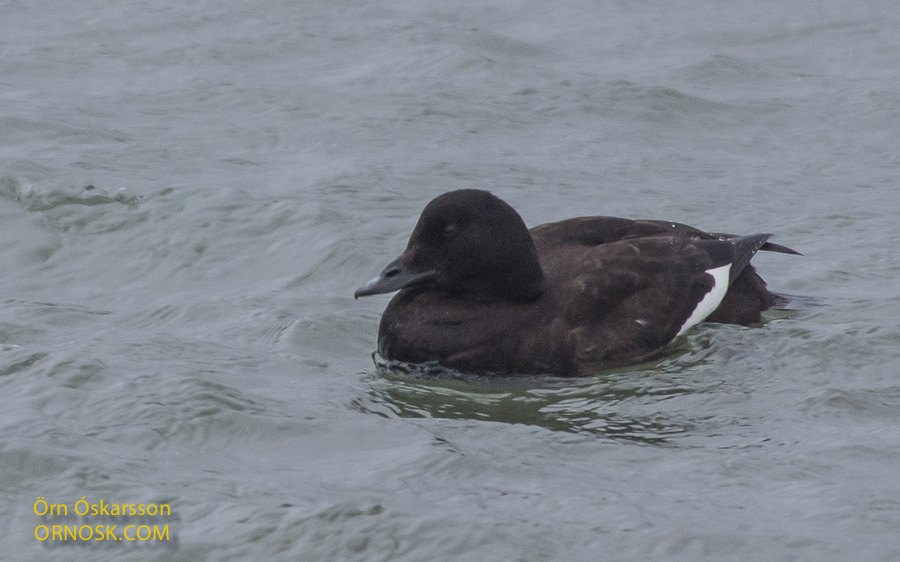
The White-winged Scoter is a rather rare vagrant in Iceland. In recent years, however, one to two birds have been spotted here almost every year. It is a North American seabird that sometimes breeds far inland by lakes and ponds. The White-winged Scoter can be seen in gull colonies where it breeds in high grass which shields the eggs from marauding gulls.
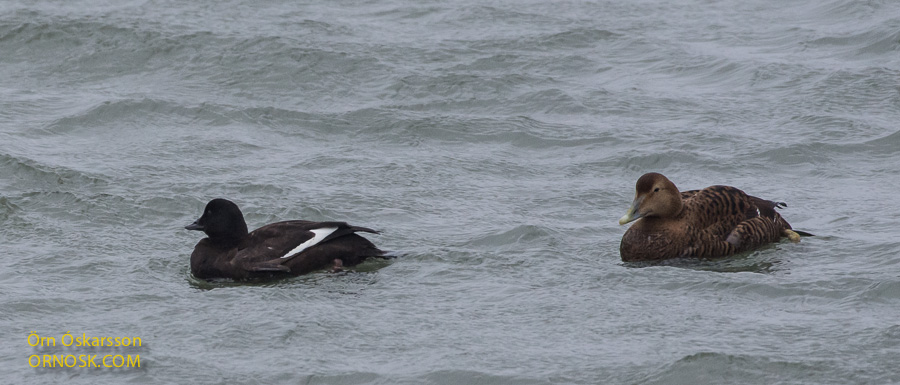
This young male Scoter was in the harbour of Þorlákshöfn, in South Iceland, two weeks ago. It was with a flock of Eiders and Long-tailed Ducks that had sought shelter there from heavy winds on the sea.
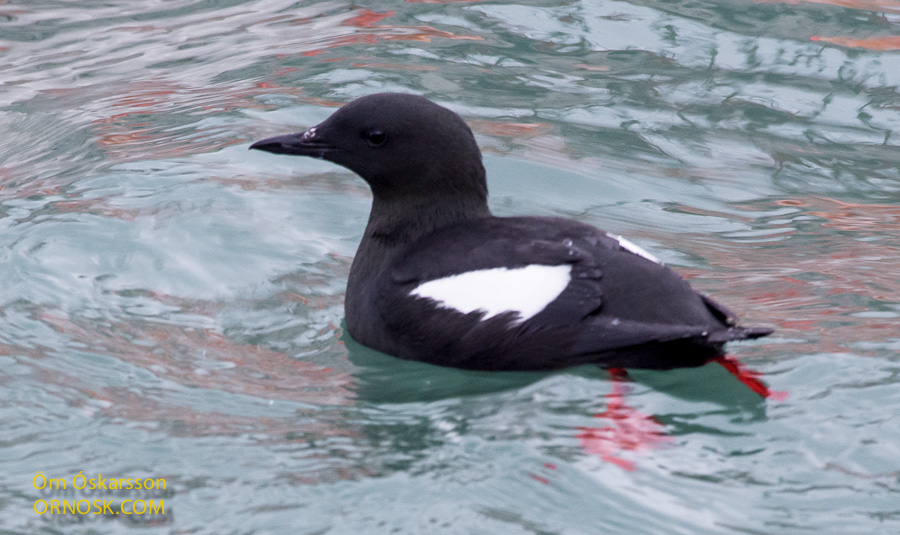
In heavy winds the raging sea is not a pleasant place, not even for seabirds. The harbour in Thorlakshofn (Þorlákshöfn) is one of the places where birds flock to seek shelter in bad weathers. We saw some Black Guillemots there last weekend.
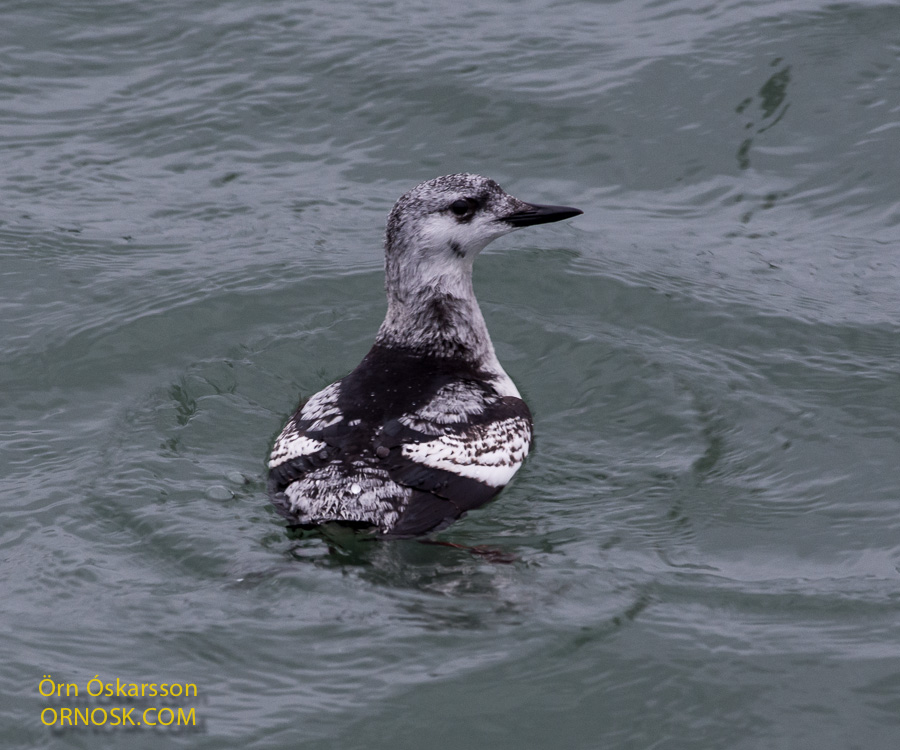
The Black Guillemot, or tystie, lives by the sea, in rocks, cliffs and in islands along the North Atlantic coast as far south as Ireland in the east and Maine in the west. It breeds all around the Icelandic coastline and there are estimated around 20 to 30 thousand pairs here. The Black Guillemot can often be seen in seabird colonies along with other alcids. They usually stay near their breeding places in winter or take out to the open sea.
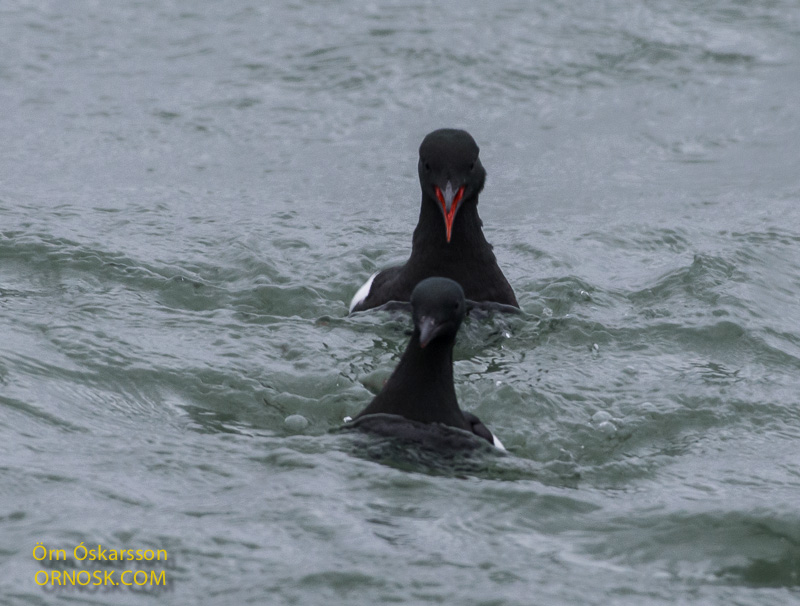
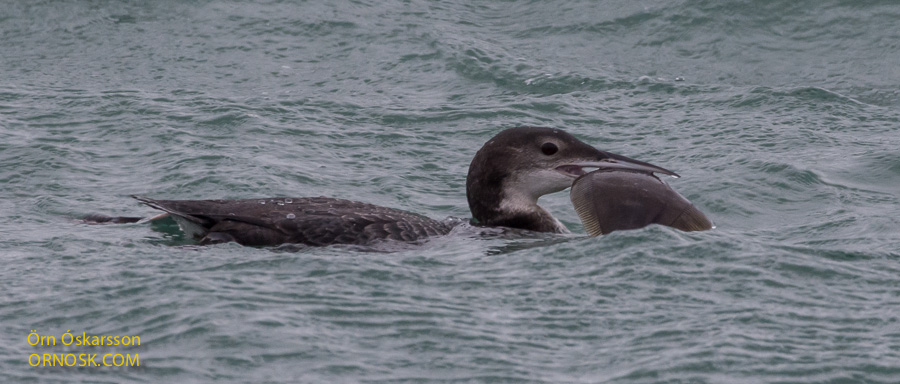
In Þorlákshöfn harbour last weekend we saw this Great Northern Diver in a battle with something we first thought was a bird. Later we saw that it was a fish, a flatfish. This went on all about the place for some time. Eventually the Diver managed to swallow the fish whole. Not a mean feat that. By lifting up its whole body with the bill high in the air down it went. Bon appetite.
Most Icelandic Great Northern Divers stay in the ocean around the country over the winter time but a few overwinter in the UK or West Europe. Iceland is the only breeding place of the Northern Diver in Europe with around 300 breeding pairs here.

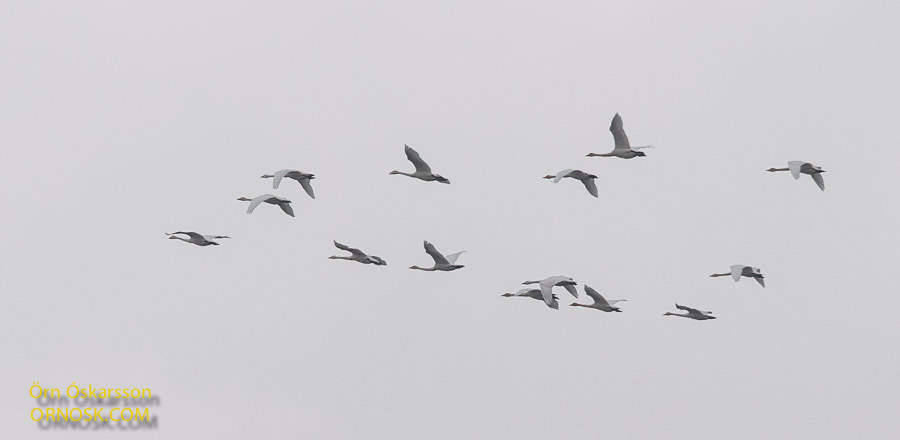
It is still February but this week the first flocks of Whooper Swans could be seen flying along the Southeast coast. Small groups were spotted in Fáskrúðsfjörður and in Hornafjörður, having just arrived over the Atlantic Ocean. Most Whooper Swans migrate to the British Isles in the autumn and come back in late winter. They are one of the very first migrators to arrive. We hope their coming signals a change in the weather and look forward to some warmer days.
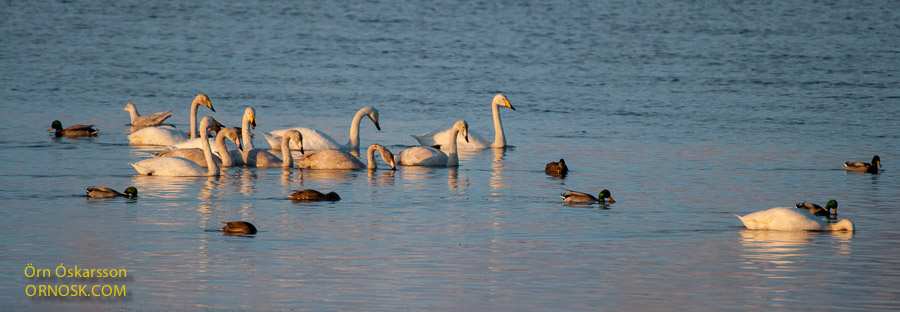
Whooper Swans are very common in Iceland and can be seen all over the country year round, although some still migrate to the British Isles in winter. On Ölfusá River by Selfoss there were about 40 birds this winter. The Whooper Swans pair for life and return to the same breeding place year after year. They are very sensitive and if disturbed the pair may abandon the nest and eggs.
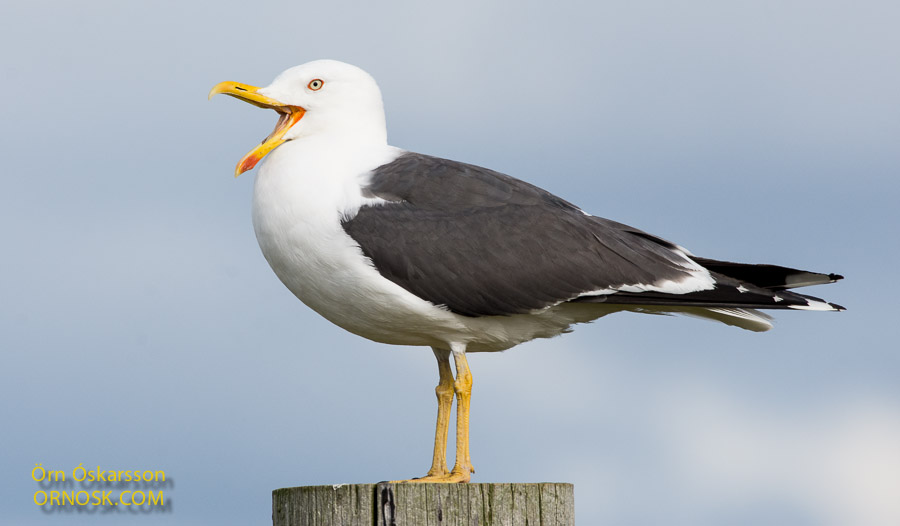
The Lesser Black-backed Gull has arrived, the very first migrator to signal the changing of the seasons. Spring, however, seems we off as the weather has been at its very worst. But this is a promising sign, an indicator for the weather gods to change course and bring us some warmer winds.
The Lesser Black-backed Gull is usually one of the earliest arrivals in Iceland, or perhaps the very first to arrive as early as February. They spend a few winter months by the shores of the Iberian peninsula and North West Africa. It is the only gull that is a complete migrator in Iceland. The Lesser Black-backed Gull started breeding in Iceland in the 1920s and the breeding population now counts around 50,000 pairs.

In the end of January and in February the male Common Crossbills become quite noticeable in the tops of the Lodgepole Pine forests (Pinus contorta) in Grímsnes area, South Iceland. They sing and try to catch the attention of the females.
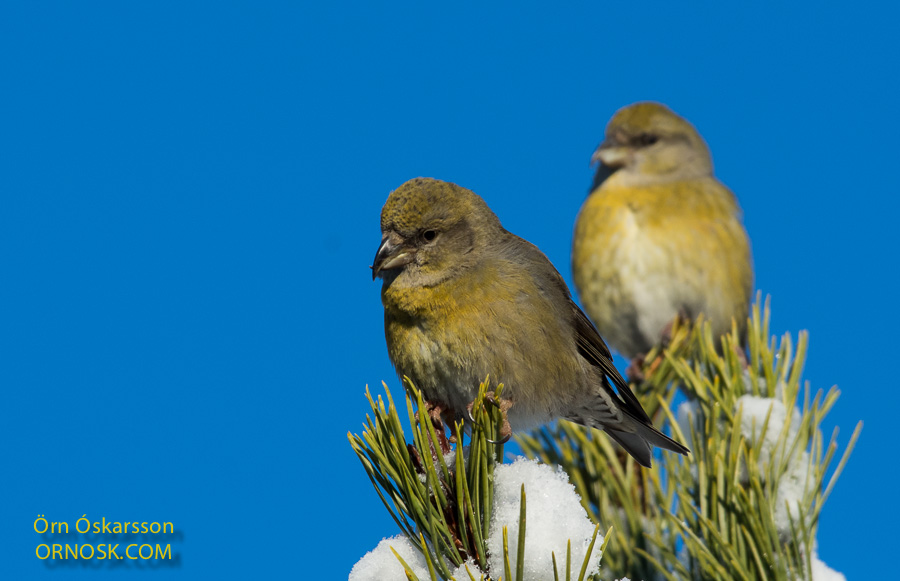
Although it is still mid winter in Iceland they have obviously started courtship. Some seem now already paired and are feeding their spouses which is a sign that the nesting period is not far away.

The cones and seeds of the Lodgepole Pine are now becoming ripe and that seems to be the indicator that tells the birds that it is time for mating.
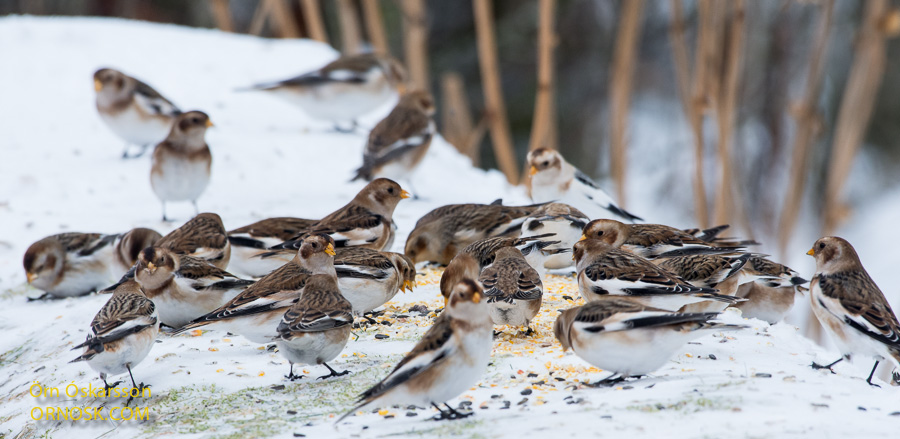
Snow Buntings have frequented Icelandic gardens all over the country this winter. In the past few weeks they have been seen in huge flocks and we counted 400 birds here in our garden in Selfoss. Last year, however, we didn’t see any Snow Buntings here.
This winter has been harsher than in previous years, with long lasting frost and snow. In the last century The Snow Bunting was the typical Icelandic winter bird and usually the only bird to be seen in winter along with the Raven. In the last few decades there has been a change and the Snow Bunting has been seen more rarely in Icelandic gardens.
The reasons for this change are not certain and people speculate whether this is due to a decrease in the stock. However, an increase in corn production in agricultural could be reducing the Snow Buntings need to come into gardens for feed, at least when snows do not cover the fields.
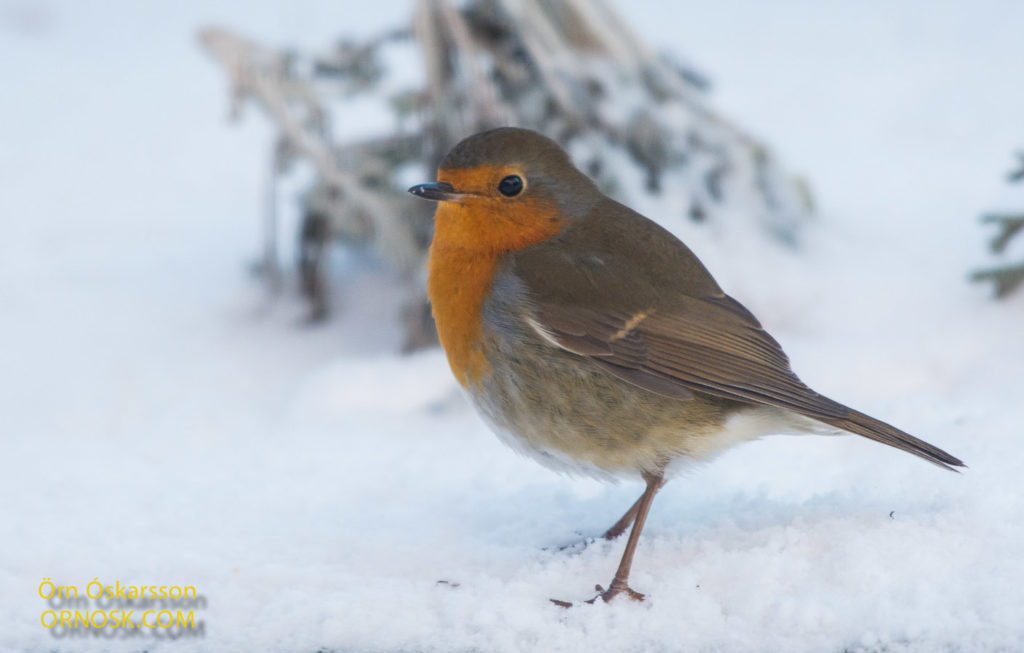
Since autumn this Robin has been a daily guest in the garden. Our Robin roams the neighbourhood but always turns up again. We have news of another one just over the river. Hopefully they are a male and a female that will pair up and breed here in the spring.
The Robin is a rather common vagrant in Iceland and is known to have breed here.